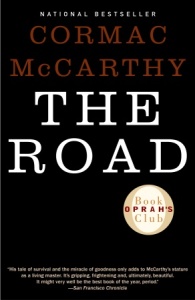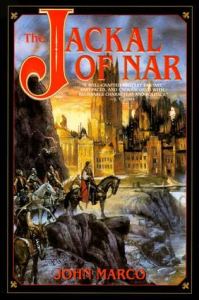Ever notice how some books are divided into Chapters, and some aren’t? How some books break things up into “Parts”, “Books”, or even “Acts”? How sometimes there are Prologues, Epilogues, Asides, and Interludes, but sometimes there are none? Sometimes the Chapters have titles, sometimes they’re just numbered, and sometimes they’re time-stamped?
What’s up with that? Further, how does the structure of a book affect the reading experience? And, most important, why the hell am I blogging about this?
Well, I’ll answer the last question first: I love looking at book structure. I’m a bit of a weirdo in that respect, I know, but I really enjoy breaking a novel down and examining its form, its layout, even its chapter length, because whether an author intends it or not (and I honestly think they rarely do) the layout of a novel affects the reading experience just as much as the content, even if that impact is more subtle. So let’s break it down.
Chapters
Breaking a book up into chapters is not only the standard for modern novels — it’s pretty much expected. Chapters allow the reader to pause during reading, often (though not always) having reached a temporary halt to the narrative. A Chapter is usually a miniature story in and of itself, a brief snippet of the larger narrative: if the novel is about a journey to a distant land, a single Chapter can chronicle a day of travel, an encounter, or reaching some landmark along the way.
Depending on author preference, Chapters are sometimes titled, and sometimes just numbered. I, personally, have done both, depending on the tone and flow of the story. Chapters with names often highlight a smaller event that begins or is resolved in the course of that Chapter, while Chapters without titles are sometimes indicative of a more flowing narrative. Ultimately, it all depends on the author.
In novels with complex structures, Chapter titles can help call out setting, time or character POV (Point of View) to help indicate to the reader what’s going on. George R.R. Martin, who uses a large number of character POVs, uses this approach to identify which character the reader is with for that chapter; Gillian Flynn used a similar approach in Gone Girl.
Sometimes books don’t have Chapters at all, and this stands out because we as readers are so used to having breaks in the narrative (if for no other reason than to tell our brains to check our watch and remind us that we shouldn’t stay up all night reading…). Books without Chapters sometimes do so for a purpose: in The Road, Cormac McCarthy is describing a post-apocalyptic world where time has essentially lost meaning, and life has become a fugue of repetitive travel from one dreary locale to the next. Reading the book without Chapters (just breaks in the text) puts us into the mindset of the characters, and by the end of the book we’re just as exhausted as they are because we’ve been trudging though a (metaphoric) landscape, just as they have. In Molloy, Samuel Beckett takes a similar approach to highlight the monotonous and stream-of-consciousness nature of an investigation by telling an 80+ story in only 2 paragraphs (the first of which is just 2 pages long).
Parts/Books/Acts
Just as Chapters are ways of organizing the narrative components of a novel, Parts (or Acts, or some other title the author may decide to impart based on their personal preference) are often a means used to organize the Chapters themselves. If a novel is extremely episodic or divided into large story arcs, Parts 1, 2, etc. might be used to divide those sections of the story; similarly, a Part of a novel can sometimes be used to mark major story shifts when the narrative switches geographic locations, periods of time, etc.
John Marco’s excellent “The Jackal of Nar” is a fine example of this structure, breaking down the story into several Parts: Richius’ days in the war, his journey to meet his emperor, his eventual return to the land where he lost someone important to him, etc. Just as each chapter tells its own small story, each “Part” tells a single arc of the novel’s plot, so that in the end it almost feels as if we’ve read several tightly connected novellas in a series.
The number of “Parts” or larger sections in a novel depends entirely on the overall plot. Highly sectioned and episodic tales can benefit from this structure, while novels that are more stream of consciousness or whose stories aren’t divided into a tidy plot don’t normally make use of “Parts”.
Sometimes, a Part – which generally contains several Chapters – becomes a Chapter in and of itself. Russel Brand’s The Sweet Hereafter tells the story of a school bus accident from the points of views of five different characters, but rather than switch back and forth between those characters over the course of the novel (as is the norm for a book with multiple POVs), Brand’s book has one long chapter devoted to each character’s POV, and each section of the novel tells the same tale from an entirely different perspective.
Prologues & Epilogues
There are some pretty serious feelings about whether or not Prologues or Epilogues should even be used in novels anymore, with a great number of people saying “Hell no, I never bother reading them”, but with most authors I know stating “I use them if necessary”. Most “How to Write” books tell you NEVER to use Prologues, yet writers like Robert Jordan generally had Prologues numbering 50 or more pages in every book in his series. (The argument that always follows is “When you get as popular as Robert Jordan, you can use Prologues…until then, don’t do it.”)
I still know many readers (my wife among them) who simply skip Prologues altogether. I tend not to be a huge fan of them unless I feel they serve a purpose, like setting up interesting (but not necessarily vital) background info on the setting, or if the Prologue happens to be the only chapter not told from the main character’s point of view.
Epilogues are seen even less seldom. Most of the important stuff is wrapped up in a novel’s last few chapters; an Epilogue, to me, is more like an afterthought, the fate of an interesting secondary character or the solution to the last piece of unresolved plot, not so important that the reader is on edge waiting for it but interesting enough that the author feels its inclusion is warranted.
For the most part, readers I’ve met either skip the Prologue/Epilogue or else don’t really care about them. They both seem somewhat old fashioned to me, but I’ll still use them if they seem necessary.
What sorts of novel structure do you find enticing/off-putting? Authors, what’s your tendency?
About the Author
Steven Montano is the author of Red Tide at Morning, The Last Acolyte, the Blood Skies series and The Skullborn Trilogy. He and his family live in Michigan.
Learn more at http://steven-montano.com/




This is a very interesting topic. I’ve been pondering on the idea of splitting my 47 chapters into a few parts, but I have found my novel flows continuously and that there wasn’t any natural gaps. I’ve come to the conclusion that trying to organise chapters into sections before i’ve finalized my manuscript was a waste of time.
My chapters all have names. They tend to follow themes, such as being named in clusters and sometimes being a bit of dark commentary on what unfolds. I love the idea of someone trying to guess what my chapter names mean and then being surprised when they’ve got it wrong.
I’m a big fan of vague chapter titles. If I could get away with doing an entire book in Rocky & Bullwinkle style titles, I probably would. (Chapter 8: Dark Times, or How The Rhinoceros Got His Guns Back!).
I’ve flipped back and forth on this. My first book is organized along the theme of the smithing process, and it worked out beautifully for the story arc. That book has named chapters too. The second book I couldn’t think of good titles for the chapters so I simply numbered them, although it is divided into parts, along a looser theme of dicing. I was writing the third one using the character names as chapter titles ala GRRM, but I decided against that and went back to organizing chapters around events rather than POVs.
I’ve done different for different books. Blood Skies Books 1-3, 6 & 7 were divided into parts and had named chapters; Books 4 & 5 didn’t get divided into parts. The Skullborn Novels have nameless chapters, as does Red Tide At Morning. The Rike Chronicles actually calls out dates. It really depends on the project (and, more importantly, the writer’s mood ;D).
Pingback: Parts, Chapters, Breaks: How Structure Affects the Reading Experience - Steven Montano
Pingback: Action Pacing in Novels – Long Chapters or Short? | Autumn Writing